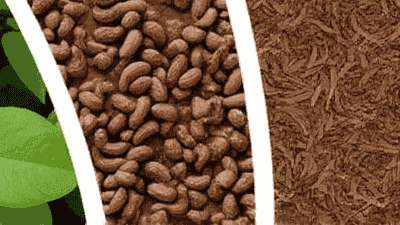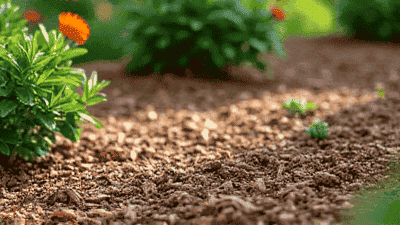
Mulch is an essential component in landscape beautification and garden maintenance. It offers numerous benefits that enhance the health of your plants, improve aesthetics, and contribute to environmental sustainability. Understanding the different types of mulch available can help you make informed choices for your landscaping projects.
Mulch is a layer of material applied to the surface of soil in gardens and landscape beds. It can be made from organic or inorganic materials and is used for various purposes, including soil moisture retention, weed suppression, temperature regulation, and aesthetic enhancement. Mulch can significantly improve the overall health and appearance of your garden.

Before diving into the different types of mulch, it is important to understand the benefits that mulch provides:
Weed Suppression: A thick layer of mulch acts as a barrier for sunlight, preventing weed seeds from germinating and reducing competition for nutrients and water.
Moisture Retention: Mulch helps retain moisture in the soil by reducing evaporation, which is particularly beneficial during hot and dry weather.
Temperature Regulation: Mulch insulates the soil, keeping it cooler in the summer and warmer in the winter. This temperature regulation supports plant root health and aids in the growth of various crops.
Soil Health Improvement: Organic mulches decompose over time, adding nutrients to the soil and improving its structure and drainage. This helps foster a healthy underground ecosystem.
Aesthetic Appeal: Mulch can enhance the visual appeal of your garden, creating a polished and cohesive look. Different types and colors of mulch can complement various plants and landscape designs.
Erosion Control: A layer of mulch helps reduce soil erosion, particularly on slopes and in areas prone to heavy rainfall.
Mulch can be categorized into two main types: organic and inorganic. Each type has its own characteristics, benefits, and ideal use cases.
Organic mulch is derived from natural materials and offers a range of benefits as it decomposes over time. Some common types of organic mulch include:
Wood chips, bark nuggets, and shredded bark are popular organic mulches used in landscaping. They are available in various sizes and types, offering versatility in application.
Benefits:
Ideal Use: Wood chips and bark mulch are best suited for flower beds, shrub borders, and around trees.
Straw is an excellent organic mulch choice, particularly for vegetable gardens. It is lightweight and easy to apply.
Benefits:
Ideal Use: Straw is commonly used in vegetable gardens, around perennials, and in any area where you want to retain moisture.
Grass clippings can be used as a free and effective mulch option, especially if you regularly mow your lawn.
Benefits:
Ideal Use: Use grass clippings around garden beds and as a mulch in vegetable patches, but avoid applying them in thick layers to prevent matting.
Cocoa hulls are derived from cocoa beans during chocolate production and are a fragrant and attractive mulch choice.
Benefits:
Ideal Use: Best used in ornamental gardens and flower beds. However, be cautious if you have pets, as cocoa hulls can be toxic to dogs.
Shredded leaves can be an abundant and effective organic mulch option readily available in many yards during fall.
Benefits:
Ideal Use: Shredded leaves can be applied around plants, in garden beds, or used as a top dressing for lawns.
Inorganic mulch is not derived from plant materials and does not break down over time. It is typically made from materials like stone, plastic, or rubber. Here are some common types:
Landscape fabric is a geotextile material that is laid down before applying mulch. It acts as a barrier between soil and mulch, preventing weeds while allowing water and nutrients to reach the soil.
Benefits:
Ideal Use: Landscape fabric is best used in perennial gardens and under pathways.
Gravel and stone mulch come in various sizes and colors, making them a versatile choice for landscaping projects.
Benefits:
Ideal Use: Great for rock gardens, pathways, and areas with poor soil drainage.
Rubber mulch is made from recycled rubber tires, providing an environmentally friendly mulch option.
Benefits:
Ideal Use: Best used in playgrounds, landscaping, and pathways.
Plastic or fabric mulch is often used in commercial vegetable production and home gardens. It helps with moisture retention and weed suppression.
Benefits:
Ideal Use: Ideal for vegetable gardens and crops in warmer climates.

Once you have chosen the right type of mulch for your needs, it is essential to know how to apply it correctly for maximum benefits. Here are some tips:
Proper Depth: Apply mulch at an optimal depth of 2 to 4 inches. Too little mulch won’t effectively suppress weeds, while too much can suffocate plants.
Avoid Plant Damage: Keep mulch away from the stems and trunks of plants to prevent rot and disease. Leave a small gap around the base of each plant.
Water Before Applying: Water the soil before adding mulch to ensure that moisture retention begins immediately.
Refresh Mulch Annually: Organic mulches decompose over time and will need to be replenished annually to maintain their effectiveness.
Monitor for Pests: Keep an eye out for pests or diseases that can thrive in mulch. Remove any infected or pest-infested mulch promptly to prevent spreading.
Mulch plays a vital role in landscape beautification, offering numerous benefits that can enhance the health and appearance of your garden. By understanding the different types of mulch and their respective advantages, you can make informed choices that suit your landscaping needs. Whether you opt for organic options that enrich the soil or inorganic types that add durability and aesthetic appeal, the right mulch can transform your outdoor space into a thriving sanctuary.
By employing effective mulching techniques and practicing proper maintenance, you can yield bountiful gardens and picturesque landscapes that contribute to the beauty of your home and environment.